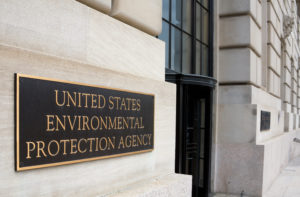
SCRS, CPMA ask EPA to reconsider pigment risk evaluation
By onAssociations | Collision Repair | Repair Operations
The Society of Collision Repair Specialists (SCRS) and the Color Pigments Manufacturers Association (CPMA) have asked the Environmental Protection Agency to reconsider its regulatory action on the chemical C.I. Pigment Violet 29 (PV29).
PV29 is used as a pigment in paints, coatings, and plastics – primarily in vehicles and industrial carpeting. EPA evaluated PV29 under the amended Toxic Substances Control Act (TSCA) and released its final risk evaluation in January 2021, which states PV29 poses “unreasonable risks to workers and occupational non-users from 10 conditions of use.” The agency found that there is “no unreasonable risk” to consumers, bystanders, the general population, or the environment.
SCRS believes any hazards associated with exposure to PV29 should be identified at the manufacturer level. SCRS Executive Director Aaron Schulenburg wrote in a Feb. 8 letter to the EPA that there are no scientific studies that indicate there is nanoparticle exposure during the application of paint of any medium because collision repairers only mix liquids, not pigments.
“It is our belief that no testing has been done to date at the collision center level that proves that nanoparticles of PV29 are present,” Schulenburg wrote. “… SCRS highly recommends that EPA perform more conclusive testing before pursuing implementation of any rule.”
SCRS also recommended EPA consult with the safety and compliance company, KPA. The society, CPMA, and others were asked to serve as Small Entity Representatives (SERs) to the Small Business Advocacy Review Panel (SBAR Panel) for the EPA’s regulatory action, “Colour Index Pigment Violet 29 (PV29), Rulemaking under TSCA Section 6(a).” The panel includes Small Business Administration, Office of Management and Budget, and EPA representatives. If the EPA believes a proposed rule may have a significant economic impact on a substantial number of small entities, it will begin the SBAR Panel process, which is intended to provide a special opportunity for small entities to participate in the rulemaking, according to EPA’s website.
Schulenburg wrote in his letter that SER conversations held on Jan. 25 showed the EPA lacks a clear understanding of how collision repair businesses interact with automotive paint. He noted that collision repair businesses aren’t involved in the formulation or mixture of products in paints and coatings, don’t purchase pigments from the refinish manufacturer, and don’t purchase specific colors from the auto manufacturer directly. Therefore, he added, SCRS members aren’t generally aware of which pigments are in the products they use.
“Collision repair businesses have access to Safety Data Sheets (SDS) from their refinish manufacturer for details surrounding product identification and composition,” Schulenburg wrote. “… To a collision repair facility, it is unclear if PV29 is currently identified within the SDS.”
Despite SCRS’ belief that collision repairers aren’t exposed to PV29, Schulenburg wrote that repair facilities already follow OSHA-regulated safety measures where refinishing processes take place and workers wear PPE that “could and would reduce risk” of exposure. He cited a 3M document that facilities follow, which details task-specific respirators, masks, filters, and options that “must all be carefully selected based on activity, contaminant, and the concentration levels to which the worker is exposed.”
Meeting OSHA standards for respiratory protection is already costly, Schulenburg wrote, so SCRS asked that before increasing those costs due to proposed EPA regulations on PV29, that the agency evaluate if existing PPE protocol would “circumvent risk, and if not, to seek to regulate the use of PV29 at the manufacturer level, rather than place increased obligation on the end-user” including through consultation with OSHA and 3M.
With his Dec. 15 letter to the EPA, CPMA Executive Director David Wawer included a report by Ramboll US Consulting regarding the “Airborne Particle Size Characterization of C.I. Pigment Violet 29 (PV29), which he wrote shows definitively that workers and occupational non-users at DCL Corp.’s Bushy Park facility aren’t exposed to PV29 particles in the ultrafine range that the EPA found to present health hazards.
Ramboll measured airborne concentrations of particulates at Bushy Park, which according to CPMA is the only U.S. facility that manufactures PV29. The study focused on the final stage in the batch production of PV29 – the one most likely to generate the highest concentrations, and smallest particle size of the chemical. The same measurements were made in an adjoining room where sealed bags of pigment were loaded into boxes.
Wawer wrote that the most important finding of the study was “airborne [ultrafine particles] UFP were not generated as part of the PV29 grind and blend pack-out process” and that “[a]irborne ultrafine particle concentrations decreased throughout the monitoring period with a mean concentration [that] was less than the mean background concentration [that] was measured prior to handling PV29.”
He also noted that the concentrations of UFP did not increase during activities and events involving the handling of PV29. “By contrast, measurements of larger particle sizes demonstrated lower background concentrations and clear increases that corresponded closely with tasks performed during bag filling, including overfilling bags, wiping down surfaces, and the ‘shakedown’ task that occurred at the end of the bag filling process,” Wawer wrote.
CPMA thinks it appropriate that the EPA conclude there is no unreasonable risk in downstream use of PV29 unless that involves agitation and dispersion of PV29 particles, according to Wawer’s letter.
“Alternatively, EPA could encourage representatives of these downstream industries to conduct similar UFP monitoring at representative workplaces and provide the Agency with the results,” he wrote. “At an absolute minimum, the proposed risk management rule should provide facilities with the option of conducting initial monitoring at appropriate locations, comparable to that conducted by Ramboll, to determine whether ultrafine particles are observed to fluctuate in ways that correspond to activities involving PV29. Where no such correlation is observed, facilities would have no further obligations under the rule.”
IMAGES
Featured image credit: Skyhobo/iStock
